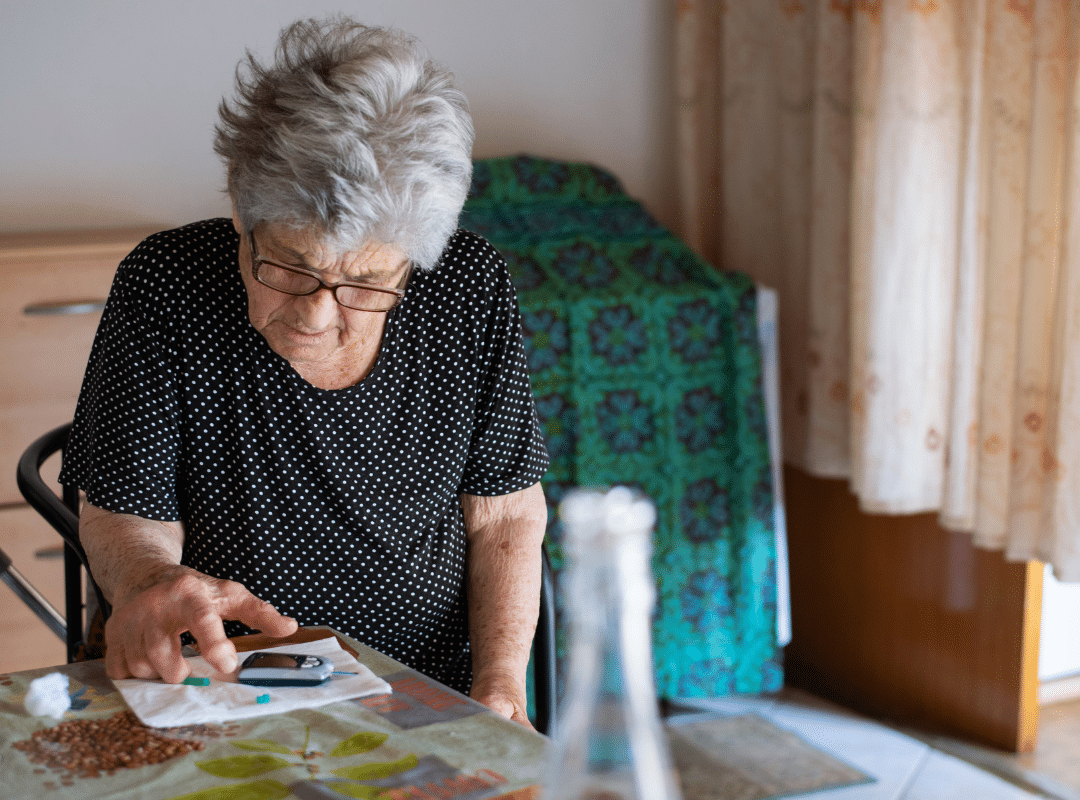Catching diabetes in older people early can make a tremendous difference in quality of life. Many older adults live with undiagnosed or unmanaged diabetes, unaware of the signs until complications arise. Symptoms such as unexplained fatigue, increased thirst, or blurry vision are often dismissed as typical signs of aging. However, these could point to something more serious. The key is understanding the risk factors, recognizing subtle symptoms, and acting quickly.
At Magnolia Terrace Assisted Living, we stress the importance of proactive health checks and support plans tailored to the elderly. Knowing what to watch for empowers families and caregivers alike. That’s why recognizing and responding to these early signs is not just helpful—it’s essential.
Understanding Diabetes After Age 60
Diabetes after age 60 presents unique challenges that require specific care and attention. As the body ages, its ability to regulate insulin becomes less efficient, increasing the risk of high blood sugar. This makes routine checkups and health education especially important. At this stage in life, conditions like cardiovascular disease or kidney complications often arise alongside diabetes. When you understand diabetes, elderly complications, and how they develop, you’re better equipped to make informed decisions. Facilities like Magnolia Terrace offer supportive environments where residents can manage these concerns with the help of professional care teams.
Diabetes in Old Age Symptoms You Shouldn’t Ignore
Recognizing diabetes in old age symptoms means staying alert to subtle yet impactful changes. These may include sudden fatigue, unexplained weight loss, frequent urination, or blurred vision. One particularly overlooked sign is the slow healing of wounds, which can signal impaired circulation. These indicators might be brushed off, especially when caring for someone who appears generally healthy. However, if you notice multiple symptoms or persistent changes in behavior and energy, consult a doctor immediately. According to the American Diabetes Association, regular screenings and awareness of how symptoms manifest in older adults are crucial to early diagnosis.
Symptoms of Diabetes in Elderly Woman: What to Watch For
The symptoms of diabetes in the elderly woman can sometimes differ or be harder to detect. Hormonal changes, loss of appetite, or even cognitive decline might be mistaken for menopause or aging. Watch for increased thirst, fatigue, and noticeable shifts in mood or confusion. These aren’t just emotional changes—they might be physical indicators of fluctuating blood sugar. Timely detection makes starting dietary or lifestyle changes that help manage or prevent complications possible. At Magnolia Terrace, our care approach involves tracking subtle shifts to ensure every resident receives attention.
How to Avoid Diabetes in Old Age
Learning to avoid diabetes in old age starts with simple, consistent habits. Eating a balanced diet, staying active, and getting enough sleep all play a role in managing blood sugar. These habits don’t require dramatic changes—small, consistent actions are often the most effective. Limiting processed sugars and maintaining a regular meal schedule can help prevent insulin spikes. Just 30 minutes of light exercise daily, such as walking or water aerobics, supports metabolic health and insulin function. Community-based programs, like those at Magnolia Terrace, offer nutrition guidance and fitness activities tailored for older adults.
Early Detection of Diabetes in Older People
Identifying diabetes in older people early has long-term benefits. Frequent health screenings—like A1C or fasting glucose tests—are essential. When detected early, diabetes can be managed with far fewer complications. Early treatment helps maintain energy, prevents nerve damage, and can significantly reduce hospital visits. Magnolia Terrace’s resident care team monitors these metrics regularly to stay ahead of issues before they worsen. By encouraging routine screenings and a transparent health dialogue, families and caregivers can help extend the quality and length of life for their loved ones.

Managing Diabetes: A Collaborative Approach
A team-based plan is key to managing diabetes long-term. Doctors, caregivers, and nutritionists each play a role. They ensure that glucose levels remain stable, medication is correctly administered, and diet is aligned with individual health goals. Magnolia Terrace residents receive support through scheduled wellness checks and access to tailored dietary plans. When everyone works together, individuals don’t just survive—they thrive. Plus, social support helps residents stay engaged and motivated to continue healthy routines, even when challenges arise.
Take control of your health today. Schedule a tour at Magnolia Terrace Assisted Living to learn how we support older adults living with or preventing diabetes.
Explore related topics in our blog on senior health services, and check out the CDC’s diabetes resource hub for national guidelines and tips.
Frequently Asked Questions
What are the symptoms of diabetes in the elderly?
In older adults, symptoms of diabetes may appear gradually and can be subtle. Common signs include increased thirst, frequent urination, unexplained weight loss, fatigue, blurred vision, and slow-healing wounds. Some seniors may also experience confusion or memory issues, which can be mistaken for normal aging. It’s essential to monitor for these symptoms and consult a doctor for proper diagnosis.
Why is diabetes common in the elderly?
Diabetes is more common in the elderly due to several age-related changes. As people age, they often experience a decrease in insulin sensitivity and physical activity, along with an increase in body fat. Additionally, long-term poor dietary habits and underlying health conditions can contribute to the development of type 2 diabetes. Genetics may also play a role in an individual’s risk.
What happens to diabetics when they get older?
As diabetics age, managing blood sugar levels can become more challenging due to changes in metabolism and other age-related health issues. Older adults may also develop complications such as nerve damage, kidney problems, or cardiovascular disease. Cognitive decline and mobility limitations can affect how well they manage their condition. Regular monitoring and tailored treatment plans are essential for healthy aging with diabetes.
What is the primary problem in older patients with diabetes?
The main issue for older adults with diabetes is the increased risk of complications and the difficulty in managing the disease alongside other chronic conditions. Hypoglycemia (low blood sugar) is a serious concern, especially if the person is on insulin or other glucose-lowering medications. Cognitive decline, physical limitations, and polypharmacy can further complicate diabetes care. Personalized and simplified treatment approaches can help address these challenges.

